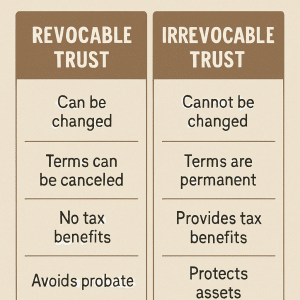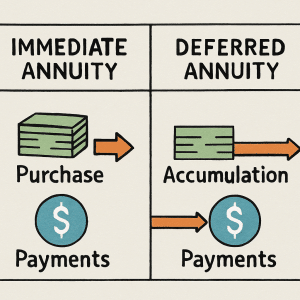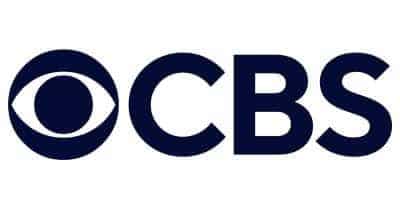Summary of SECURE 2.0 Act Changes You Want to Know
As we begin 2023, the SECURE 2.0 Act is set to become one of the most talked-about legislative measures affecting the retirement savings landscape in the United States.
SECURE 2.0 makes significant changes to existing retirement laws in an effort to promote retirement savings and provide greater access to retirement benefits for American workers.
In this comprehensive guide, we will take a closer look at the SECURE 2.0 Act of 2022 and its implications for individuals, employers, and retirement plan providers.

What is the SECURE 2.0 Act of 2022?
The SECURE 2.0 Act of 2022 was part of the Consolidated Appropriations Act, 2023 which was signed into law on December 29, 2022. This new legislation builds upon the SECURE Act of 2019 and includes significant changes to retirement savings plans.
Secure 2.0 Act is a combination of three separate bills:
(1) the Securing a Strong Retirement Act, which passed the House of Representatives 414-5 in March of 2022;
(2) the Retirement Improvement and Savings Enhancement to Supplement Healthy Investments for the Nest Egg Act (“RISE & SHINE”), and
(3) the Enhancing American Retirement Now Act (“EARN”).
SECURE 2.0 Act of 2022 Key Take-aways
2.1 Increased Access to Retirement Plans
One of the key objectives of the SECURE 2.0 Act is to increase access to retirement savings plans, especially for low- and middle-income workers. The Act proposes to create new incentives for employers to offer retirement plans to their employees, such as tax credits, simplified administrative processes, and safe harbor provisions.
Emergency Savings.
Starting in 2024, employers could offer defined contribution retirement plans with an added emergency savings account designated as a Roth account.
- Employees who are not highly compensated would be allowed to contribute up to $2,500 annually (or less, depending upon the employer) and access the first four withdrawals tax and penalty-free.
- Depending on the plan rules, these contributions may be eligible for an employer match. Aside from providing penalty-free access to funds, this emergency savings fund would also encourage participants to save for any unexpected expenses.
2.2 Automatic Enrollment and Escalation
New 401(k) and 403(b) plans must now include an automatic enrollment feature.
The automatic enrollment must be at least 3%, but not more than 10%, and then escalate yearly by 1% up to a maximum of somewhere between 10% and 15%. As with current eligible automatic contribution arrangements, participants may unwind contributions by taking permissible withdrawals within the first 90 days of their automatic enrollment.
Some plans are exempt, including existing plans, governmental plans, church plans, small employers with 10 or fewer employees, SIMPLE plans, and new employers that have been in existence for less than three years. This section does not go into effect until January 1, 2025.
401(k) Portability.
- Additionally, retirement plan service providers may provide employers with automatic portability services, allowing employees to easily transfer their low-balance retirement accounts to a new plan when changing jobs.
- This provision may be especially beneficial for lower-balance savers, who often cash out their retirement plans instead of transferring them to other eligible retirement plans.
2.3 Lifetime Income Options
The SECURE 2.0 Act addresses concerns regarding the lack of lifetime income options in retirement plans. The Act would require retirement plan providers to disclose lifetime income projections to plan participants and offer new options for converting retirement savings into a lifetime income stream.
Deferred Income Annuities. Beginning on January 1, 2023, the dollar limit for buying Qualified Longevity Annuity Contracts (QLACs) with retirement funds in an IRA or 401(k) will be increased to $200,000, up from the current limit of $145,000. Additionally, the law will do away with the restriction of premiums to 25% of an individual’s retirement account balance.
2.4 Changes to RMD Rules
Changes to RMDs are taking effect, beginning January 1, 2023. The age to start taking required minimum distributions will increase from 72 to 73, meaning that those turning 72 in 2023 can delay their withdrawal for one additional year.
- However, if you turned 72 in 2022 or earlier, you must continue taking RMDs as scheduled. The penalty for not taking an RMD will be lessened to 25% of the RMD amount not taken, and Roth accounts in employer retirement plans will be exempt from the RMD requirements starting in 2024.
- In addition, effective immediately, if you take an in-plan annuity payment that exceeds your RMD amount, the excess amount can be applied to your RMD. SECURE 2.0 further pushes the age to seventy-five starting in 2033.
2.5 Other Provisions
Other key provisions of the SECURE 2.0 Act include expanding the use of 529 education savings accounts, allowing long-term part-time workers to participate in retirement plans, and increasing the catch-up contribution limit for individuals aged sixty and older.
SECURE 2.0 Benefits for Younger Individuals
Student Loans. Beginning in 2024, employers will be able to contribute to workers’ retirement accounts in an amount equal to the payments employees make to pay off their student loans, providing them with added motivation to both save and pay off their educational debt.
529 Plans. After 15 years, 529 plan assets can be transferred to a Roth IRA for the beneficiary, with the amount rolled over capped at an aggregate lifetime limit of $35,000, as well as any applicable annual Roth IRA contribution limit.
It is important to consult a financial advisor or tax professional to understand how SECURE 2.0 changes may affect you personally.
3. Summary of SECURE 2.0 Act Provisions
3.1 Benefits for Individuals
The SECURE 2.0 Act has several benefits for individuals, including increased access to retirement savings plans, greater flexibility in managing retirement savings, and new options for converting retirement savings into a lifetime income stream.
Higher Catch-Up Contributions: Beginning January 1, 2025, individuals between the ages of 60 and 63 will be able to contribute up to $10,000 (which is indexed to inflation) annually as a catch-up contribution to their workplace plan, an increase from the current limit of $7,500 for those aged 50 and older in 2023.
- Individuals earning more than $145,000 (adjusted for inflation) will be required to make all of their catch-up contributions in after-tax dollars to a Roth account. Additionally, the catch-up contribution limit of $1,000 for those aged 50 and over to an IRA will be indexed to inflation, meaning it may increase annually.
Qualified charitable distributions (QCDs). Beginning in 2023, people aged 70½ and older can donate up to $50,000 to additional types of charities as part of their qualified charitable distribution (QCD). The expanded types of charities include a charitable remainder unitrust, a charitable remainder annuity trust, and charitable gift annuities.
- The amount will count towards the annual required minimum distribution (RMD), if applicable. For the QCD to count, it must be made directly from the individual’s IRA before the end of the calendar year.
3.2 Benefits for Employers
The SECURE 2.0 Act will provide new incentives for employers to offer retirement savings plans to their employees, including tax credits and simplified administrative processes. The Act will also make it easier for employers to offer lifetime income options in their retirement plans, which could help attract and retain talented employees.
3.3 Benefits for Retirement Plan Providers
Retirement plan providers also stand to benefit from the SECURE 2.0 Act. The Act would encourage the use of automatic enrollment and escalation features, which could lead to increased participation in retirement plans.
Frequently Asked Questions
Effective Dates for SECURE Act 2.0 Changes
Dec. 29, 2022, will now serve as the date of enactment (DOE), where several provisions become effective immediately, while others become effective in 2023 or later years.
In addition, PYB stands for “plan years beginning,” and TYB stands for “taxable years beginning.” Also, note that not all provisions are included in this chart.
The table above provides descriptions and effective dates for the key provisions contained in the SECURE 2.0 Act of 2022, which was enacted on Dec. 29, 2022, as part of the Consolidated Appropriations Act, 2023 (P.L. 117-328).
Note that the chart is organized in the order the provisions become effective, starting with those already in effect or that have retroactive effective dates.
Source: Key SECURE 2.0 Act Provisions and Effective Dates, ASPPA (American Society of Pension Professionals & Actuaries).
Conclusion
The SECURE 2.0 Act of 2022 is a comprehensive legislative proposal that aims to promote retirement savings and provide greater access to retirement benefits for American workers.
Its key provisions include:
- increased access to retirement plans
- automatic enrollment and escalation
- lifetime income options
- changes to required minimum distribution rules
- and other provisions.
SECURE 2.0 is one of the broadest pieces of retirement plan legislation in decades. It impacts virtually all types of retirement plans and reflects Congress’ desire to increase retirement coverage and access, protect retirement plan assets, and simplify retirement plan operation and administration.
The SECURE 2.0 Act of 2022 will have lasting impacts on retirement plans. “Employers sponsoring retirement plans need to be ready to implement the various changes on the various compliance dates”.
Sources
President Biden Signs the SECURE 2.0 Act Into Law, Arthur J. Gallagher & Co. https://www.ajg.com/us/-/media/files/gallagher/us/2023/president-biden-signs-the-secure-2-act-into-law.pdf
SECURE 2.0 Act of 2022—Congress’ Final Gift of 2022 to Retirement Plan …, https://www.bakerlaw.com/alerts/secure-20-act-2022congress-final-gift-2022-retirement-plan-sponsors.
Securing a Strong Retirement Act of 2021, Congress.GOV, https://www.congress.gov/bill/117th-congress/house-bill/2954/text
H.R.2617 – Consolidated Appropriations Act, 2023, Congress.Gov, https://www.congress.gov/bill/117th-congress/house-bill/2617/text
S.4353 – RISE & SHINE Act, Congress.Gov, https://www.congress.gov/bill/117th-congress/senate-bill/4353/text
S. 4808: The Enhancing American Retirement Now (EARN) Act, United States Senate Committe on Finance, https://www.finance.senate.gov/legislation/details/the-enhancing-american-retirement-now-earn-act.
Key SECURE 2.0 Act Provisions and Effective Dates, ASPPA (American Society of Pension Professionals & Actuaries).













